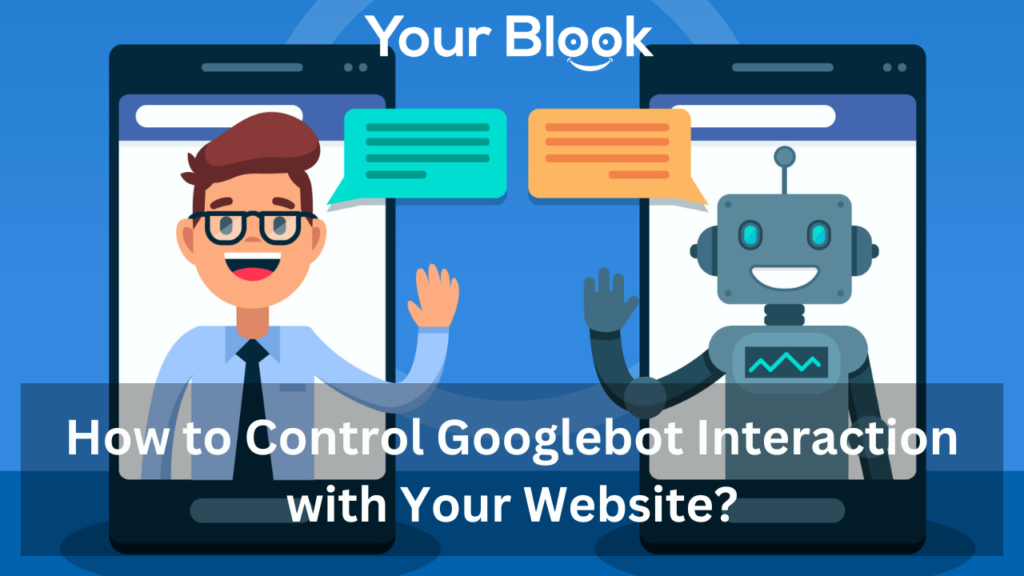Sometimes site users need to have control over bots interacting with their website. If you are a website administrator, you should ensure you have control over your site. In today’s world, Google bots are popular among bloggers and website developers. They are known for gathering data from web pages so they can index websites on SERPs.
However, you must have control over Googlebot activities such as crawling and indexing. Keeping an optimal level of security and privacy is essential for every blog or website. In this article, we are going to look at some of the ways how to control Googlebot interaction with your website.
How to Control Google bots Interaction with Your Website?
Below are some ways to control the Google bot’s interaction with your website.

Robots.txt File
The robots.txt file is a text document that stays in your site’s root directory. It fills in with instructions for web search crawlers, including Googlebot. Utilizing the robots.txt document gives you some control over what parts of your site are available to Googlebot and different crawlers.
You can utilize the disallow directive to limit Googlebot’s admittance to particular pages or directories. For instance, if you need to keep Googlebot away from crawling a specific directory named /private/, then you need to add the line to the robot.txt file mentioned below:
User-agent: GooglebotDisallow: /private/
Once you mention the following line, you can stay away from malicious bots.
Utilize the noindex Meta Tag and nofollow attribute
This technique is precious for pages you must avoid from search results, like login pages, similar content, or thank-you page forms.
“Nofollow” Attribute for URLs
Another method to control Googlebots from crawling webpages is to utilize the nofollow attribute. It guides search engines not to go after a particular link. Once used, it signals the bot not to include a page for its crawling and indexing procedure. To use the nofollow attribute, you need to type the following line:
a href=”https://example.com” rel=”nofollow”>Link</a>
By utilizing the “nofollow” attribute, you have some control over the PageRank flow and keep Googlebot from crawling pages you consider less untrusted or essential, like ads, user-generated content, or sponsored content.
Crawl Delay
The function of crawl delay permits you to control the speed at which Googlebot does website crawling. It can be beneficial, assuming your site encounters a high server load, or, on the other hand, to restrict Googlebot’s effect on your site’s performance.
To use the crawl delay function, you can add the accompanying line to your robots.txt file:
User-agent: GooglebotCrawl-delay: [number of seconds]
Replace the number of seconds with the ideal defer time in a flash. For instance, if you need to set 5 seconds delay between each Google request, the line should be like this:
User-agent: GooglebotCrawl-delay: 5
Remember that not all web search tools support the crawl delay function; regardless of whether they do, they may not necessarily stick to it. Subsequently, it’s fundamental to analyze your site’s performance and adjust the crawl delay if necessary.
XML Sitemaps
The XML Sitemaps assist search engines with a route for your website pages that you want to index. Providing an XML sitemap to Google Search Console can give more control over Google’s interaction with the website.
You also have the option of prioritizing specific pages with the XML sitemap. It also provides the update frequency and signals the last date of modification. With all this information, Googlebot knows your content’s value, eventually leading to more easily indexing your pages.
Google Search Console
Google Search Console gives extra settings to control Googlebot’s association with your site. Getting to the “Crawl” segment in the search console allows you to track down choices to adjust crawl rate limits and analyze crawl errors.
The setting of the crawl rate limit permits you to indicate the highest number of requests each second that Googlebot can make to your site. This assists you with controlling the server load and guarantees a smooth user experience for your visitors.
Crawling errors give insights into issues experienced by Googlebot while website crawling. By routinely checking on and tending to these mistakes, you can guarantee that Googlebot can access and list your content accurately.
Closure
All the above mentioned are some of the most effective ways to control Google bots interaction with your website. While these methods can assist with maintaining Googlebot interaction, there is no guarantee that you can control it completely.
Having optimal Googlebot interaction with your site is fundamental because of multiple factors, including protection, security, and crawling and indexing purposes. Users can have more command over how Google bots crawls and does site indexing. Ensure you analyze your site performance, search engine rankings, and crawl errors to get the expected results from your website. So, follow the guide above and follow the steps correctly to gain control over Googlebot interaction with your site.

